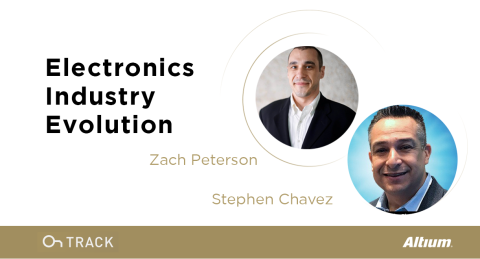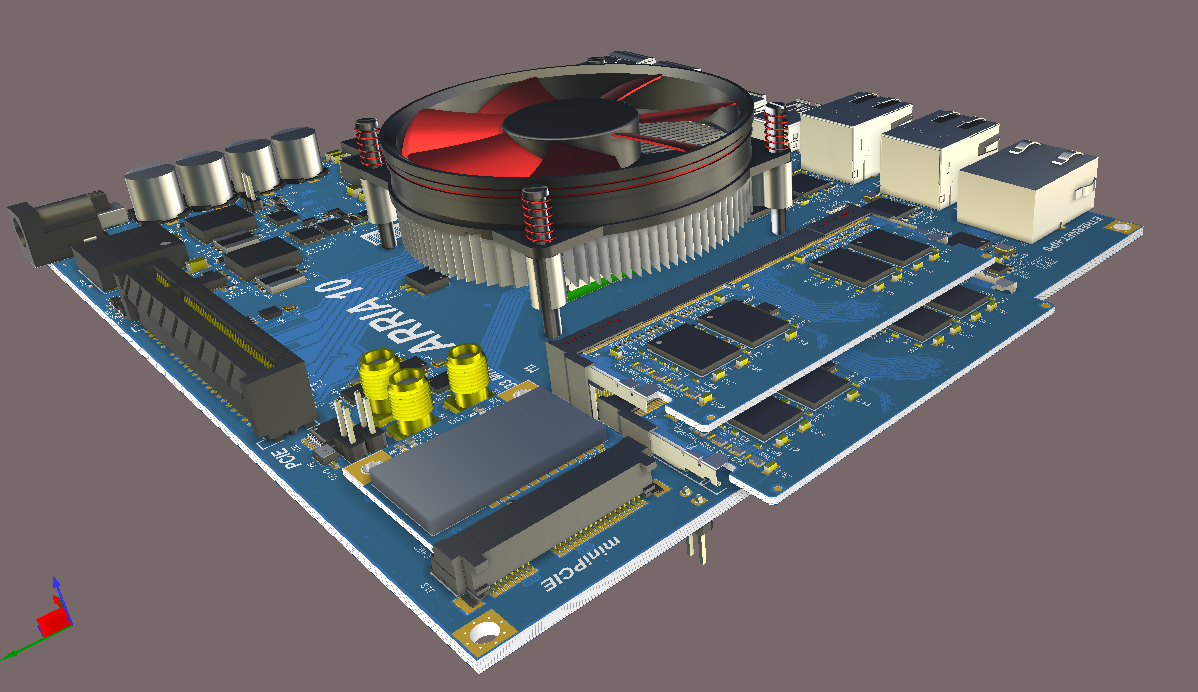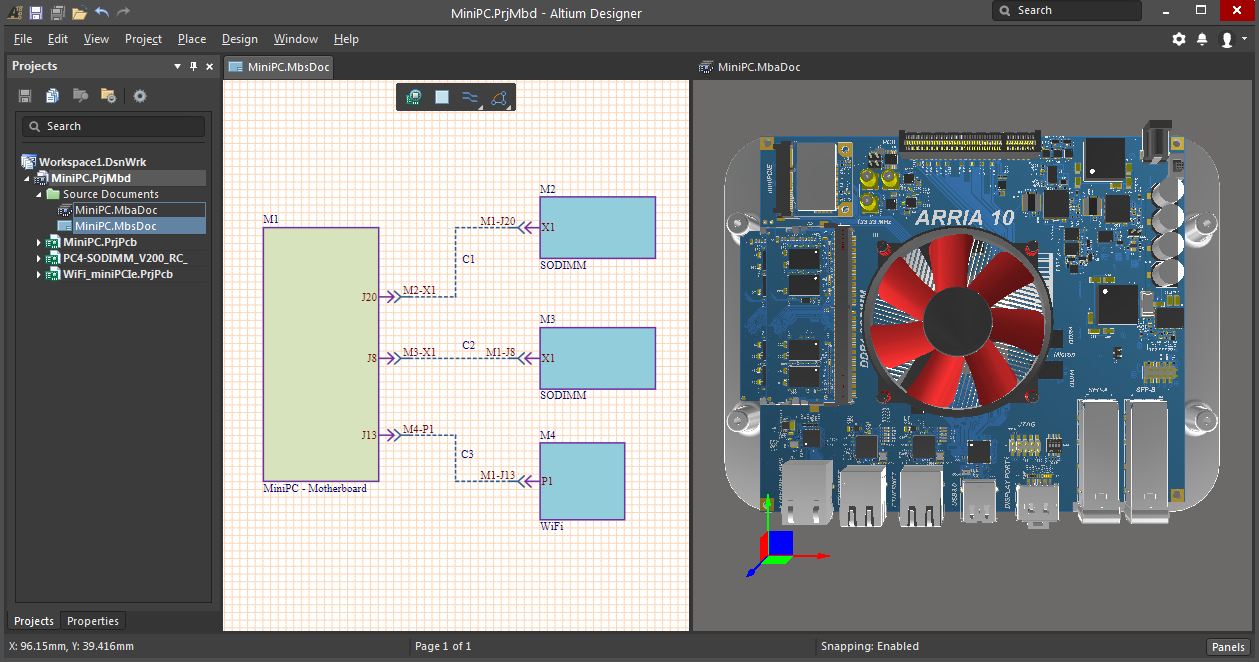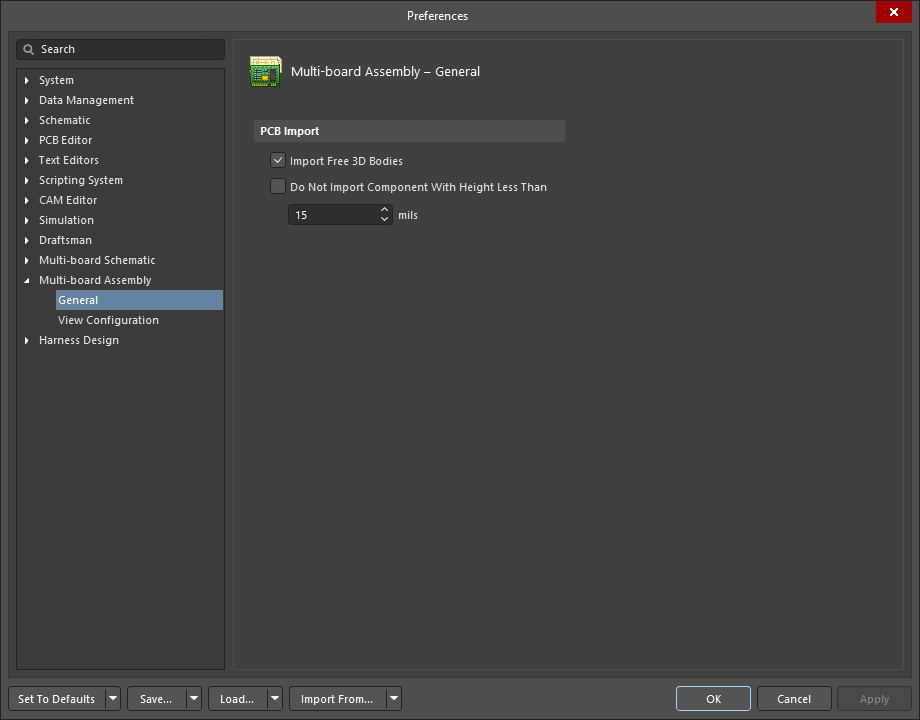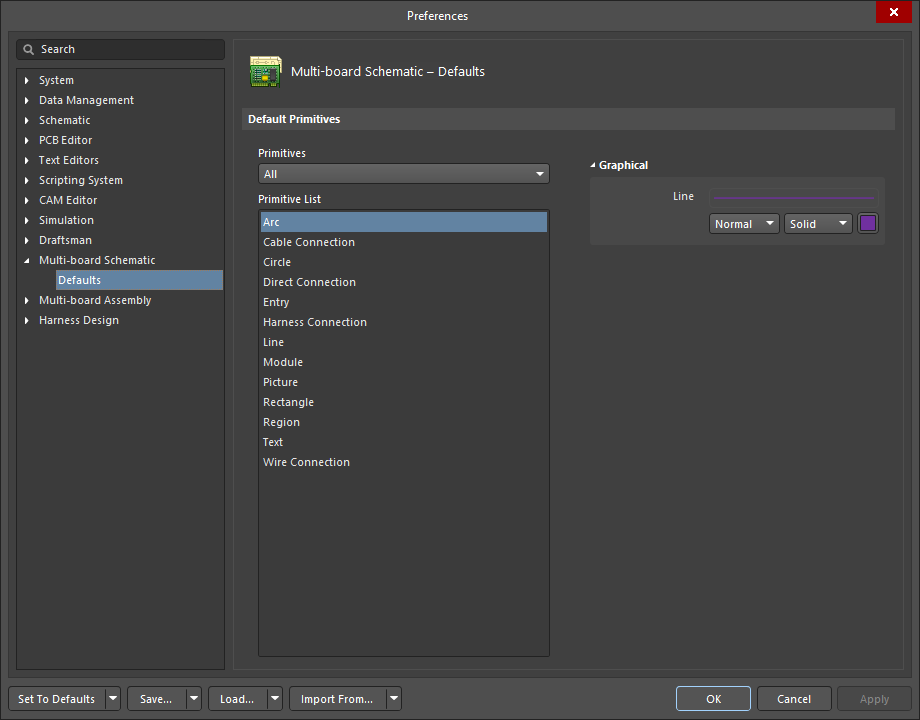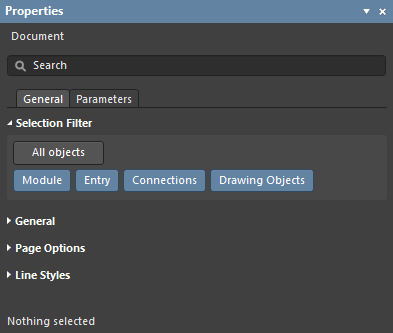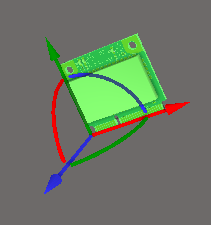Multi-board Design, a discussion with Ben Jordan
Table of Contents
Join Altium’s Judy Warner and Ben Jordan for a conversation on Multiboard PCB design.
Listen to the Podcast:
Download this episode (right click and save)
Watch the video:
Show Highlights:
- Many different product areas are being impacted by developments in Electronics, opening new frontiers - beauty products, wearables
- Electronics are replacing things that traditionally were not electronics
- Electronics product development are increasingly driven by engineers, but other makers are inspiring growth in the market - i.e. sofas, smart homes
- Design and product driven electronics, PCB designers are being pushed to partion boards into multiboard systems
- Everybody faces this multiboard challenge
- Immediate visual feedback in 3D design / 3D modeling definitely helps
- Major recurring challenge in industry: aligning connectors and aligning components that have some kind of outward expression on the actual product; MCAD and PCB assembly alignment. Multiboard design editor allows you to do this.
- Altium trivia and the origin of making tools for makers
- Ben's brother and his first soldering tool
Links and Resources:
Multiboard in Altium Designer 18
Trade In Your Outdated PCB Design Tool & Unlock 45% OFF Altium today!
Transcript:
Host: Judy Warner
Guest: Ben Jordan
J: Hey everybody, Judy Warner here. Welcome to the OnTrack Podcast. I'm the Director of Community Engagement here at Altium and this is our very first podcast. You're very brave to listen and we're happy to have you. If you're new to OnTrack altogether be sure to sign up for our OnTrack newsletter which is online at resources.altium.com, or watch our OnTrack instructional video series which you can find on YouTube, and our goal with OnTrack is our tagline is to inspire, educate, and connect, and by bringing you together, the PCB design community, we hope to do that.
J: So, please add this podcast to your favorite RSS feed or on iTunes and you can also follow me personally, please oh please, on LinkedIn or at Twitter at Altium, at Altium Judy and follow Altium on LinkedIn, Twitter, and Facebook.
J: Now, let's get into the fun stuff. So, today I thought we would talk about a subject that seems to be prevalent today in PCB design conversation, and that is about multi-board design. Many designs are going, as things become more complex, as we all know the automotive market, and so many others, because of size, weight, and power, they're being smaller, we're having to do rigid flex design, we're folding things upon themselves, we're fitting things into very tight spaces so you may have just been laying out single board designs not long ago and then you find yourself entering this sort of complex world that comes with it, comes with it a lot of, you know, new and challenging new aspects of things you need to think about in the overall design.
Judy Warner: So, a few of those things that I've learned about from my guest Ben Jordan is partitioning, connection management, and signal and power integrity. So I brought in Ben Jordan, who is our resident multi-board expert, and my friend and colleague, and partner in crime.
Ben Jordan: Thanks for having me.
J: So Ben, talk about what you see sort of currently going on in the EDA market as a whole, what's going on at Altium, and what kind of challenges specifically you see designers facing and sort of how they overcome them.
B: Yeah, well, if you look at the PCB design and electronics board level electronics design sort of industry over history over the last, I don't know, even four decades, the march has always been in it. I can't see it changing any time really soon, to make things smaller, cheaper, more reliable, better for production runs, and more compact, and that's really taken an uptick. It's, to me, if I could graph complexity versus board area, I'm sure it would look something like a hockey stick.
You know, up, up and to the right, and that really has always been that way, it's just that with exponential things like this, we see it, the further to the right you go the more acute it becomes, the issue of trying to fit more in less space, and this is partly brought on by higher levels of integration in the semiconductor side, sometimes it's alleviated by that as our guest at AltiumLive recently in Munich, Lee Richie, aptly pointed out that-
PCB designs can in some cases get simpler and simpler because more integration on the actual microprocessor is happening, but at the same time we're dealing with greater densities, greater pin out densities, but something that we have noticed in our industry is, is that there are many companies that were not electronics companies or that on the outside their products may not be considered primarily an electronic device, but- I just saw this in a magazine, like a whole article about electronics and beauty products, like, what?
J: Right, exactly.
Or like, a device you can put on your thumbnail so you know if you're gonna get sunburned, and it's an electronic device, t's, it's everywhere. Like you said, it's very prevalent.
B: Yeah, like, wearables is actually a classic sort of prescient example of that, where we, we no longer have mechanical watches. A mechanical watch is considered a luxury item these days and is very expensive if it is a genuine mechanical watch.
Just like having a horse has become a luxury item after the automobile replaced the entire horse industry, and we see the same thing happen in many different sort of product realms, and so wearables is a good example of that.
I wear a Fitbit, I love this thing, it's cool.
J: Me too, yours is cooler than mine now.
B: A lot of my friends have Apple Watches as well and, so electronics is replacing things that traditionally weren't and these companies are primarily driven by product design and function, not by the engineering team having a good idea. So electronics companies in the past, and there's still many of them that do this, see themselves as an electronics company and the product development is driven by engineering and inventors who are electrical engineers or equivalent, but then there's this whole growth in the market that happens through furniture makers, car makers, you name it.
J: That's another weird thing I saw.
You name it, and they're becoming-
J: -about the sofa, there's like a whole device
set being embedded into a sofa, I'm like what?
B: And smart homes, just think of all the control going on.
So, so these, but a lot of these are design slash mechanically driven product manufacturers or designers and so the electronics has to fit within that and as a result PCB designers more and more are being forced to partition the design into a multi-board system.
J: So how do you think we're doing as an EDA industry and addressing that and giving them tools that are, you know, easy to onboard and get up to speed quickly, right?
They can't spend six months learning how to do really excellent multi-board design, so- -
B: Exactly, so everybody, that's just it, every, everybody faces this multi-board challenge, but in the past, we're not the first company, we're not the first, Altium is not the first EDA company to provide a multi-board design solution, but we are the first in that range of the market where anybody can actually afford our, our tools. If they're a professional designer they can afford Altium Designer and it's pretty well known, and our mission has always been to include the technology people need for everyday kind of design, and advanced technology for design and not withhold that just because somebody is not an enterprise customer. I mean the enterprise has different needs around data management and workflow management, but from an actual design and computer-aided design perspective every PCB designer should have multi-board design capabilities because they all face the same problems, and so I think this is the first time that in the mainstream we've seen anybody address this multi-board design issue with proper connectivity management and 3D modeling of the system to make sure everything's going to fit.
J: So typically, if you, if you're a PCB designer, and you want multi-board capabilities,
that's going to be, it's going to be a huge cost driver for the software at large, I'm not talking about Altium per-se but if you wanted to acquire that ability inside your EDA software it's expensive than, you're saying.
B: Yeah, up until now it's been very high-end packages that had this capability that we're, we're talking maybe ten times the licensing cost, but.
J: Wow.
B: But, I mean there's many different ways of doing it, and most people out there, even myself in my hobby context in my shed, I've done multi-board design systems, and so I realized, and Altium, you know we realized, that it's something everybody needs and we shouldn't withhold it and charge extra for it. It's, it's just, it is a mainstream problem and so the technology should be available to the mainstream. So, that the other way of doing it of course is how people are doing it up until now if they don't have those tools. You have to create Excel spreadsheets or Google Sheets to maintain lists of pins on different connectors, which connector is where on the design. You have to create a hop, a high level or top level, I nearly said hop level. [laughter]
B: You have to, I know, it's crazy but you have to, you have to do this kind of stuff because if you think about the actual problems associated with it there's, there's, there's a couple of different things. If you're doing a simple stacking design, you can reuse a board shape, for example. The boards will always, not always but maybe they will be the same shape. Think of an Arduino or a Raspberry Pi that has, has shields or capes or whatever they plug into it and they stack up vertically through the connectors and that's, that's a nice elegant way to prototype things, but to go to production it's a bit tricky, and if you're, if you're developing a multi-board system like that it's fairly straightforward, but most systems are not that straightforward, and the different PCBs within the overall product may be in different locations, different planes of orientation, and can interconnect with board to board connectors or cables and harnesses, and then you get into issues like, how do you, how do you manage the pin outs?
That's a big one.
B: Connection management is a big issue, with multi-board designs even if you're stacking one board on top of another and you have a header and a socket, a mating socket, most people don't even realize until this, the blue, magic blue smoke is coming out of the first prototype [laughter] that, well actually the female connectors pin out is numbered from looking top down on it, in terms of the and the footprint in the you start traditionally pin one is at the top left and you go anti-clockwise, but that means when that connector is on the bottom side of a board plugging into another board beneath it, it's mirrored.
J: Yeah.
B: And this very simple thing can wreak havoc on the design process and time-to-market so, so we needed to provide tools to prevent those kinds of problems.
J: And I'm not. I am, come from the fab and EMS side, so I'm honestly asking these questions, I'm not, but doesn't the ability of our software to do 3D help with that to visually give you a sense that it's flipping instead of just sort of imagining how it's gonna go together-
B: It certainly does.
J:-until it's physically in front of you?
B: Yeah, it's really important to have that immediate visual feedback in whatever tools you're using, and if what you do is design anything, you need immediate visual feedback to get things right, and having that 3D modeling helps you align things, but the other side of this, the other area which is probably aside from incorrect pin assignments, one of the other areas that we noted in the industry that people struggle the most with is aligning connectors and aligning components that have some kind of outward expression on the actual product.
B: So, in my, I think of audio gear all the time because I'm into that, right, but, so one example is if I were designing a new amplifier I'm going to have some potentiometers and other controls on the front panel and so I have an enclosure, I have a front panel that has markings, and it has holes, and that's designed in MCAD, but the PCB assembly has to align perfectly to that, and I may actually want to realign components to match external holes and cutouts in the enclosure, and the multi-board design editor actually allows you to do that, allows you to go into a mode where you can actually move individual components and there could be things like potentiometers, or that their main intent is connectors that have to interface with other mating connectors on other boards, and you can actually cause them to snap together so that on the other PCB design you've got absolute confidence that you can make that first prototype and the connector will be in the right place and other components won't interfere with it in 3D space.
J: Yeah, I've seen some of you designers here in our office doing these, you know, rotating and showing, oh if I fold this over then this component is gonna run into that part or whatever I'm being able to just shift things slightly and it move kind of globally, is it's really fun to watch.
It looks almost like a computer game to me, right?
B: Yeah.
But it's really great how you can move that and see it mechanically, you know in that 3D space instead of, remember the old days of prototyping, going whoops, forgot about that, and it was completely built out and there's all these expensive and you would salvage what you can but some were just like going in the trash can,
B: And I actually have an interesting bit of Altium history trivia about that.
J: Alright let's hear trivia, cool.
B: -because we had, we had that exact issue, we, some people who've been around our orbit
for a while will have, will remember that we used to do FPGA design stuff, and we actually had a hardware design team, and their role was to design development boards for developing FPGA designs in Altium, and those boards were modular so we had the 2 is the one on thinking of, we had this huge motherboard, and on top of that you had a daughter card that plugged right in that had, that could have different FPGAs you could try from different FPGA manufacturers, and we had another three different modules you could plug into different locations on the board and each had different input output options, and so during the design process of this we ran into issues with 3D clearance. There were some actual problems, this is a multi-board system, and back then the only way our hardware team were able to model this was to print the board designs that they did have in outlines out in 2D and cut those out and glue them one-to-one on bits of cardboard, corrugated cardboard.
I would cut it all out of cardboard and glue with hot melt glue or hot snot we'd call it. [laughter]
They'd use hot snot to glue the connectors in the positions where they would be on the final boards and plug them all together like this multi-board mock-up using cardboard, and the actual bulky components would be on it.
J: That's funny.
B: And it was so time-consuming and, too tempting sometimes to leave out some that should have been on that model but just, due to time constraints were left off, and I remember-
J: Plus I'm thinking, and then the CEO walks by and thinks you're doing arts and crafts, I mean.
B: Well, I mean it was necessary, but we actually had some boards that couldn't be plugged in in their first revision and had to be revised with a different bill of materials because there was, there were some power supply inductors that stuck out too far and when the whole assembly was together they, they seriously would not fit.
So, it had, it's like, if only we'd had this then maybe we could have reduced the cost of the product, products, and so on. So there's a lot of, and as I was saying earlier I think it's inevitable that any professional will run into these sorts of problems at some point, the tools need to be provided for them.
J: Well, I had the rare and cool opportunity to speak to Dave Warren one time on a Skype call from Australia, one of our original founders, and I was just trying to get a sense of who the company was and he just reminded me of like, a swashbuckling pirate, like give 'em the tools, you know like, he just he, you can tell he was so passionate about, nobody should pay these, you know, crazy prices for functionality. Whoever wants 'em should have them, by God.
You know, in his Aussie accent like you and he cracked me up but I really, it really came through to me that he was about make sure that anyone who wants these tools can have them. That they're reachable and that, it's a fun story by the way.
B: That's cool well that has been an undercurrent of the whole history since the founding and, to hear that straight from the horse's mouth is not at all surprising to me.
I remember him sharing a similar story about when we acquired NeuroCAD in-
J: Oh he told me about that, yeah.
-the late 90's.
B: So NeuroCAD was the first neural net based, you know routing technology.
J: Yeah, he told me they were charging 118 grand for that software, and he said "we, so we bought it and we cut the" I'm doing like Scottish accent now, "we cut the bloody horns off it and gave it to the people."
Yeah, they priced it-
J: So, how much did you sell it for after that?
B: It was $395 I believe.
$395, after $118 grand.
B: And the company that developed it sold maybe three or four licenses to a few big companies.
We acquired the technology and start, immediately put the price at like, 395 or, you know, under $400 and it sold in the first month, it was over a million dollars of sales because it just, people wanted it they just couldn't afford it.
J: Well, we are out of time, but one last thing I want to thank you by the way for sharing all that.
Every time I talk I learn something amazing from you, Ben. So, on the fun side, I've always noticed, I've worked with PCB designers over 25 years plus, and something I noticed they all had in is they have really interesting lives. I like to call it designers after hours. So Ben Jordan, what do you do after hours?
B: Ooh, ooh that sounds risqué.
J: Yeah no no, this is a G-rated podcast.
B: I'm a very G-rated person after hours actually.
I've always been into technology but I'm also from, I'm the youngest of six and from a very musical family so all my brothers and sisters were into music and played instruments and actually the reason I'm into electronics is because of my oldest brother, Les, he was a great guitarist but he was also an electronics technician and used to build his own tube amps and all sorts of cool stuff, so he gave me my first lessons in electronics and my first lessons in guitar right around the time, he bought me my first soldering iron actually for my eighth birthday and taught me how to solder.
I burned myself on that thing many times and I loved every minute.
I'm like, this was learning but it was, I've never looked back and then, and then right around when I turned 12 he bought me my first electric guitar and I haven't looked back on that either. I mean, we just, we are influenced by the world around us but sometimes in our lives we have kind of heroes, and he's definitely one of my biggest heroes and showed me this, this is, this was what my life was always going to be about.
Electronics and guitar and, you know, and now I have a family too, so between, between family and work and, I squeeze hobby electronics and guitar in-between those, but it's very full and very fun.
J: That's great. Well, it was great having you and I'm sure we'll have you again 'cause you are a wealth of information on lots of subjects.
So, let's just wrap up our first podcast here. Well, thanks everyone for listening in on this conversation with myself and Ben Jordan.

